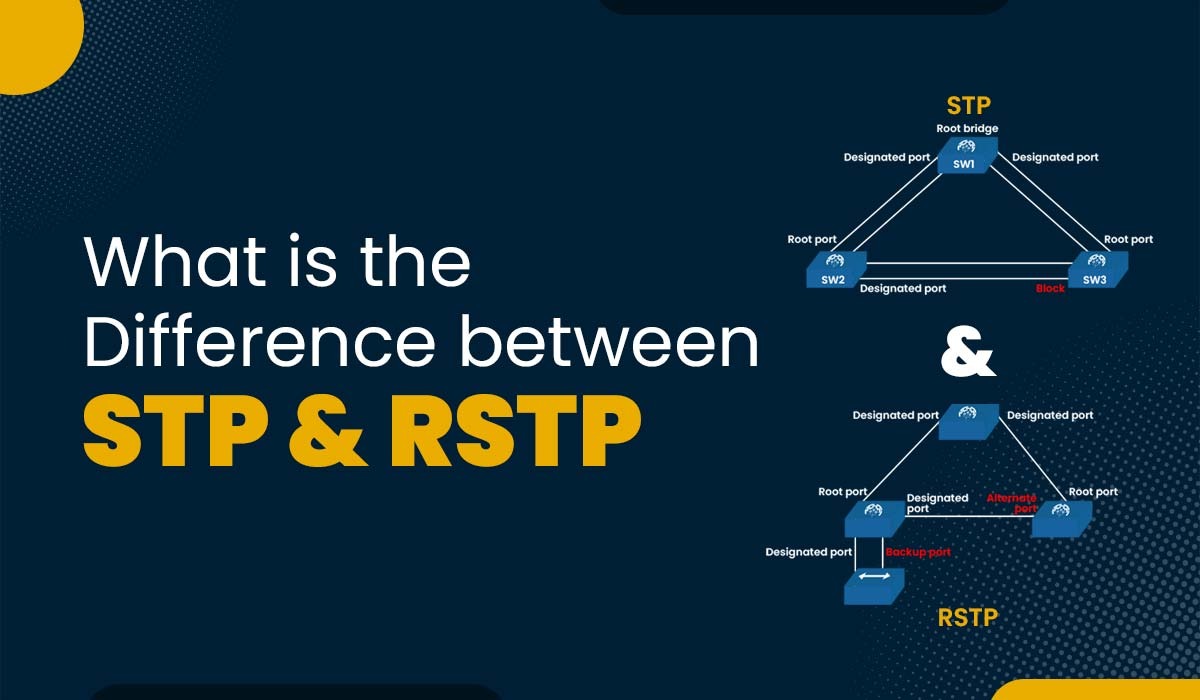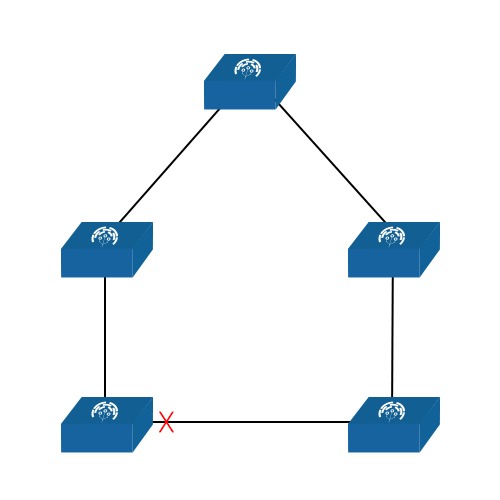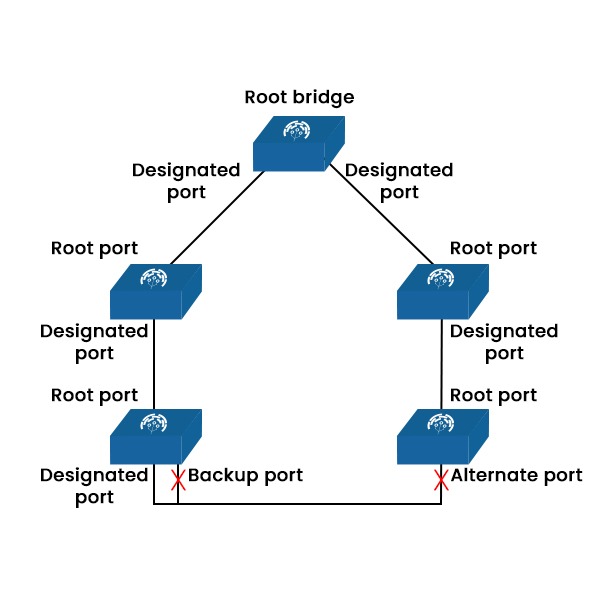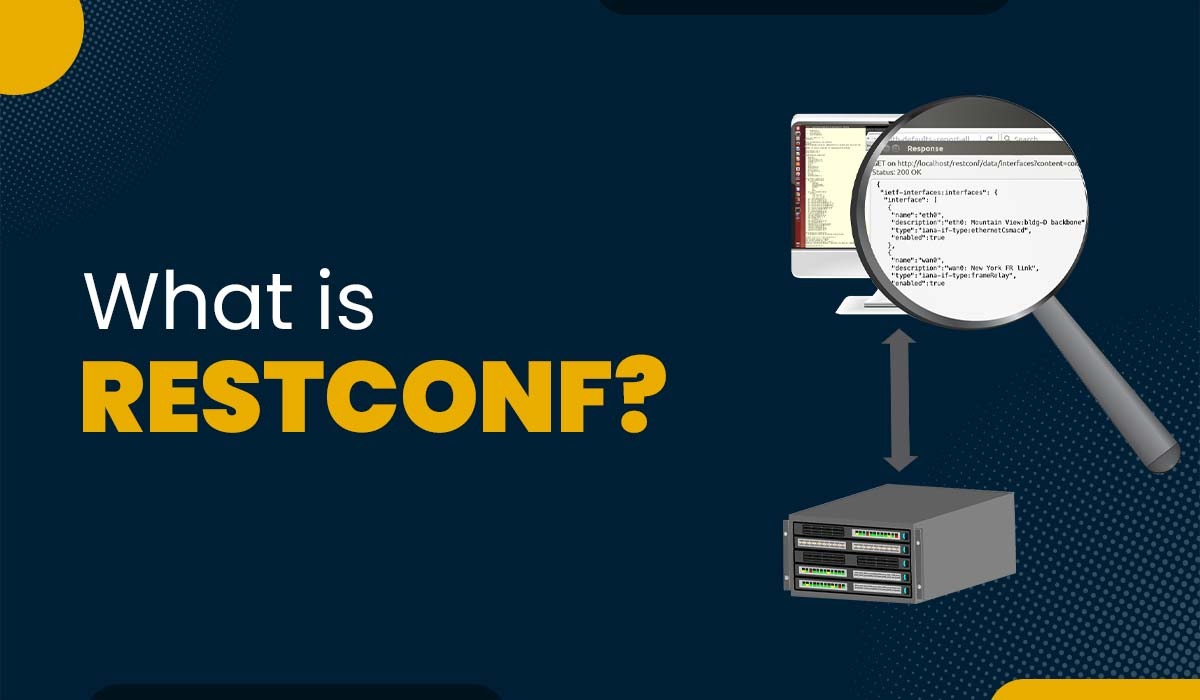STP vs RSTP – What’s the Difference?

In a computer network, having multiple paths to reach a destination can be beneficial for redundancy and load balancing. However, it can also cause problems such as network loops, broadcast storms, and inconsistent routing. To avoid these issues, network devices need to agree on a single active path for each destination and block the redundant paths. This is where Spanning Tree Protocol (STP) and Rapid Spanning Tree Protocol (RSTP) come into action. In this blog, we will compare STP vs RSTP and explain the basics of the two protocols. Let’s understand the basic difference between STP and RSTP. Below we have explained the basic difference between the two protocols in a tabular form. Now, let’s understand what STP and RSTP really are. STP stands for spanning tree protocol. STP is a layer 2 protocol that was developed in 1985 and is standardized by IEEE 802.1D. STP avoids network loops by blocking redundant network links. In this scenario, there is a possibility that a loop can form which can further cause several network problems such as broadcast storms, clogging up the network, or even leading to switch failure. This is where STP comes into action. STP selects a root bridge based on a priority value and a MAC address to control the network’s active path in the network. The root bridge is the switch that has the lowest priority value or the lowest MAC address if there is a tie. The root bridge then sends BPDUs to all other switches to inform them about their existence and the cost to reach each destination. The ports that are not on the active path are then blocked by the other bridges. To prevent loops, ports that are not root nor designated are blocked. Although the blocked ports do not forward traffic, they do listen for BPDUs from other switches. The ports that are either root or designated are then put into a forwarding state to route traffic normally. This procedure produces a loop-free logical topology known as a spanning tree, in which there is only one active path between any two switches in the network. RSTP stands for rapid spanning tree protocol. RSTP is an improved version of STP. There are many similarities between STP and RSTP, and RSTP is backward-compatible with STP. It limits unused ports to prevent network loops. RSTP works by adding an alternate and backup port. Instead of waiting for the network to converge, these ports can immediately enter the forwarding state. The alternative port changes to the forwarding state if the segment’s allocated port fails. Let’s understand the detailed STP vs RSTP to get better knowledge about the two. The network protocols RSTP (Rapid Spanning Tree Protocol) and STP (Spanning Tree Protocol) both function to stop loops in switched networks. Below we have explained the difference between the two in detail. RSTP may convert a port to the forwarding state without having to wait for the timers to finish, hence it has a faster convergence time than STP. A proposal agreement method is used by RSTP to discuss the port status with nearby switches. STP has five different states Blocking, Listening, Learning, Forwarding, and disabled. Only three port states are supported by RSTP: discarding, learning, and forwarding. The blocking and disabled states of STP are combined into the discarding state. Due to its ability to identify link failures or recoveries using BPDUs (Bridge Protocol Data Units) or physical link status, RSTP responds to topology changes more quickly than STP. A TCN (Topology Change Notification) flag in the BPDUs is used by RSTP to transmit the topology change information to every switch in the network. These are the roles assigned to ports by the protocol, which determine their function in the network. RSTP has four port roles: root, designated, alternate, and backup. STP has three port roles: root, designated, and non-designated. This is the ability of the protocol to interoperate with older versions or other protocols. RSTP is backward compatible with STP, as it can detect and communicate with STP switches in the same network. However, this may reduce the performance and benefits of RSTP, as it has to follow the rules and limitations of STP. RSTP is more scalable as compared to STP. RSTP can manage larger networks with quick convergence. Now, we have fully compared STP vs RSTP to understand their differences. Yes, the Rapid spanning tree protocol is faster than the spanning tree protocol in terms of convergence rate. Also, it has a new port state and port roles for better functioning making businesses choose RSTO over STP. STP, RSTP, and MSTP are protocols that assist in preventing loops in network switches. STP time is around 30 to 50 seconds, which means if there are any changes to topology it will act as per the given time. RSTP time is around 6 seconds, hence faster than STP. A BPDU (Bridge Protocol Data Unit) is a data message that is exchanged between switches in a network using the Spanning Tree Protocol (STP). The BPDU contains information about the switch’s identity, priority, port roles, and costs. Both STP and RSTP are important protocols that assist in preventing network loops and also ensure network redundancy. In this blog, we have compared STP vs RSTP. We also have explained both these protocols separately in detail. If you have any doubts or suggestions, feel free to write in the comment box below.Introduction
STP vs RSTP
Factors RSTP (Rapid Spanning Tree Protocol) STP (Spanning Tree Protocol) Convergence Time Faster (5 to 10 seconds) Slower (30 to 50 seconds) Port States Discarding, Learning, Forwarding Blocking, Listening, Learning, Forwarding, disabled Topology Changes Detected and propagated quickly by all bridges Detected and propagated slowly by the root bridge Port Roles Root, Designated, Alternate, Backup Root, Designated, Blocked Backward Compatibility Compatible with STP but reverts to STP mode if STP device is connected Compatible with RSTP but operates in STP mode if the RSTP device is connected Scalability More scalable due to faster convergence and link aggregation support Less scalable due to slower convergence and blocked links What is STP in networking?

What is RSTP in networking?

Difference between STP and RSTP
Convergence Time
Port States
Topology Changes
Port Roles
Backward Compatibility
Scalability
Frequently Asked Questions
Q1 – Is RSTP faster than STP?
Q2 – What is the difference between STP and RSTP and MSTP?
Q3 – What is STP and RSTP time?
Q4 – What is Bpdu in STP?
Conclusion







